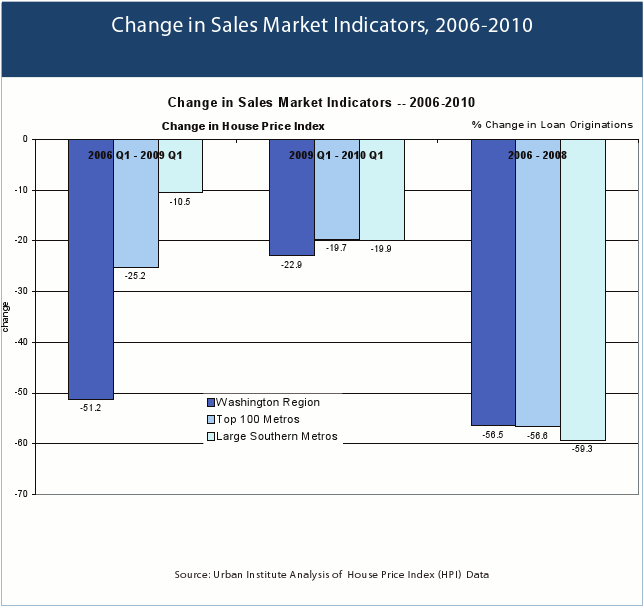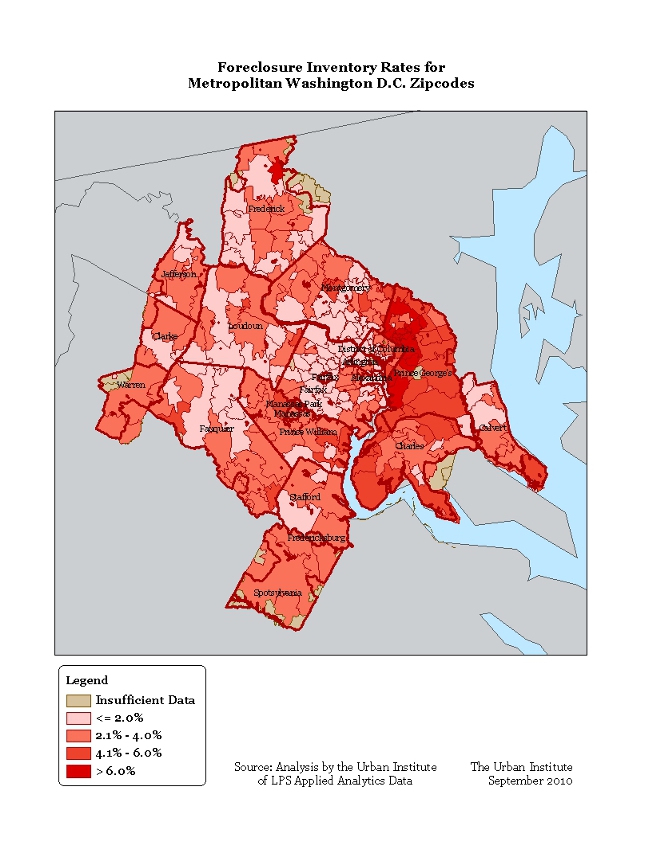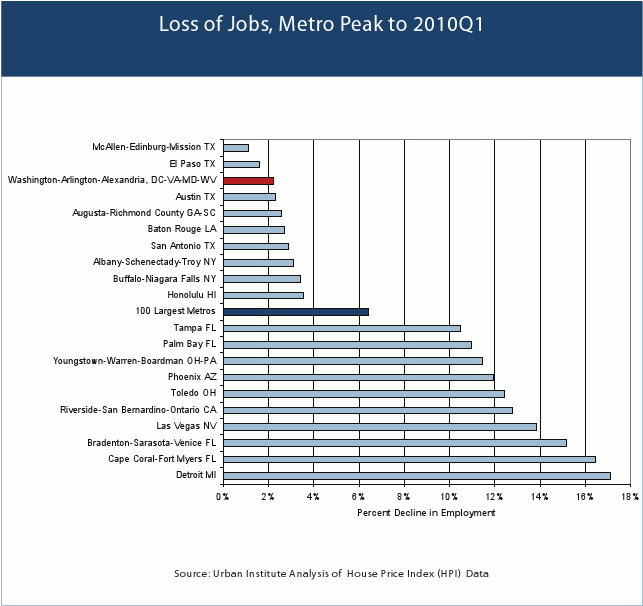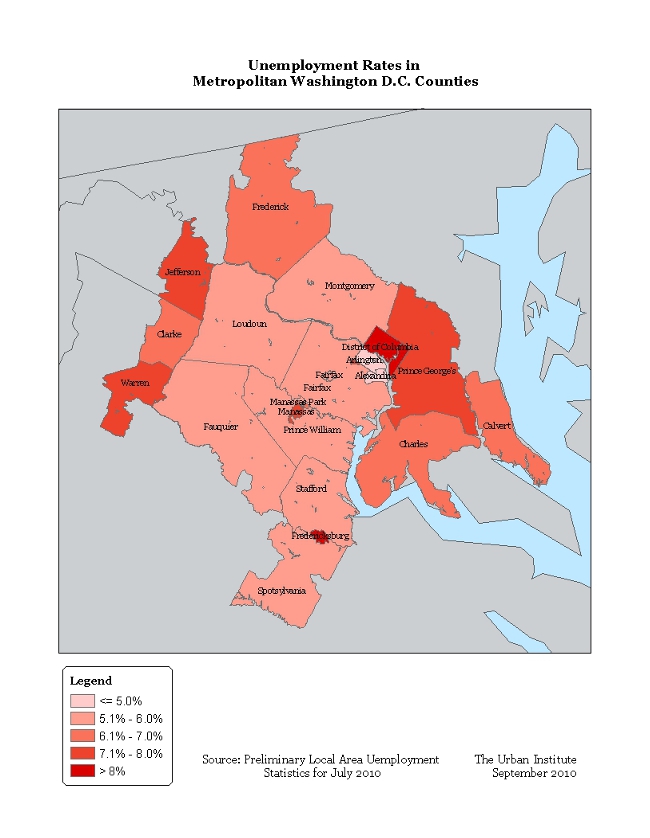
|
|
Metropolitan Spotlights Our new metropolitan spotlights focus on selected metros, showing how they're faring relative to others in their region and nationally. Washington, D.C. Metropolitan AreaDuring the boom years of the 2000s, the Washington, DC region out-performed most other metros nationwide. Its economy diversified, although the federal government remained the single biggest employer and the magnet for much of the private economic activity. The region enjoyed robust job growth, high wages, and low unemployment. The District of Columbia, which had long suffered from distress and decline, experienced a remarkable renaissance, with population, jobs, housing, and property values all rising. And both city and suburban communities across the region became more diverse. The Washington region's initial house price decline was double the average for the 100 biggest metros nationwide, and dramatically larger than average for big southern metros. The housing downturn has been particularly severe in the outer suburbs and in Prince George's County, the region's large, predominantly black suburban jurisdiction. In-depth analysis of the region's housing market finds that prices in the District of Columbia and most of the inner suburban communities declined only slightly and are already recovering. In contrast, properties in Prince George's County and in the outer and far suburbs lost about a third of their market value on average. As of March 2010, 8.2 percent of metro Washington mortgages were seriously delinquent, up 1.7 points from a year earlier. Among the nation's top 100 metros, Washington scores 37th (from the bottom) on this indicator. Miami, FL had the highest March 2010 share of seriously delinquent mortgages at 26.6 percent) and Austin, TX had the lowest (4.4 percent). At the end of 2009, 34,200 loans were in foreclosure region wide – a foreclosure rate of 2.9 percent. Not surprisingly, foreclosure rates vary dramatically across the region, from a low of only 0.9 percent in Arlington to a high of 6.0 percent in Prince George's County. Renters as well homeowners have suffered from the foreclosure crisis. In the District of Columbia, for example, an estimated 2,923 rental units faced foreclosure between 2006 and 2008. Although the housing market was hit hard, employment has held up relatively well in the DC region. At the end of May 2010, unemployment stood at 6.0 percent – almost double the pre-recession rate, but still lower than most other big metros nationwide. The total number of jobs dropped only 2.2 percent from the peak of the boom through the first quarter of 2010, compared to an average decline of 6.4 percent among the nation's 100 largest metros (note that the peak of the boom varies by metro). Only El Paso and McAllen, Texas weathered the crash with smaller rates of job loss. The Washington region's economic resilience is largely due to federal government employment, which has actually expanded during the downturn. But every sector of the economy has held up better in the Washington region than for the US on average. Government employment grew more in this region than in the top 100 metros nationwide and private sector employment declined less. In fact, private sector jobs in professional and business services actually climbed slightly in the DC region while declining in most other metros nationwide. Despite this overall positive jobs picture, many people and communities within the Washington region are suffering. Several sectors of the economy that have historically been important sources of lower wage jobs suffered substantial declines. For example, employment in construction was down 8.9 percent from the region's economic peak through the third quarter of 2009. The entertainment and recreation sector was down 7.4 percent; retail trade 5.1 percent, and wholesale trade 3.6 percent. Some areas within the region face unemployment rates much higher than the 6 percent regional average. As of May 2010, the District of Columbia's unemployment rate was 9.6 percent, Fredericksburg VA's was 9.1 percent, and Prince George's County's was 7.0 percent. In the District of Columbia's poorest neighborhoods – East of the Anacostia River – official estimates of unemployment are as high as 30 percent. So, although the Washington region's employment picture may improve relatively quickly, the wide disparities and resulting hardships that existed prior to the recession are likely to persist, and may in fact be more severe as a consequence of the recession. Specifically, widespread and sustained joblessness among young people who aren't in college may have a "scarring" effect, undermining their employment prospects and earnings over the long-term. Fewer and fewer of the region's jobs offer living wages for poorly-educated and lower-skilled workers or job ladders that let people progress from entry-level jobs to jobs that pay good wages. Housing costs remain high in the District of Columbia and many of the close-in suburbs, creating hardship for low-wage workers. In 2010, even after the severe market downturn, the Washington area has among the nation's highest housing costs. In the suburbs, it takes four full-time jobs at the minimum wage to afford a modest two-bedroom house or apartment. Inside the District, where rents are somewhat lower, that number is 3.5. Without strategies that simultaneously boost employment and earnings for lower-skilled workers and make decent housing throughout the region more affordable, the Washington region's prosperity will leave low-income families farther and farther behind. |
Share
Feedback Metropolitan Spotlights Related Resources |







